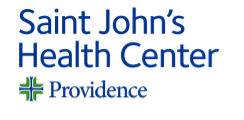
Republished from Healthline
Experts say it’s important for people to know their blood pressure reading and then adapt lifestyle and medication regiments to manage it.
- An increasing number of people in the United States have high blood pressure that’s not being managed effectively.
- While earlier data suggested that blood pressure control was improving, data from the past few years shows a decrease.
- Hypertension increases the risk of heart attack, stroke, and many other serious health issues.
- People should keep an eye on their blood pressure and have it checked at least once per year.
- Family members can help by encouraging loved ones to make healthy lifestyle choices.
New research is reporting that “uncontrolled high blood pressure” is a growing problem among adults in the United States. The findings were presented this week at the virtual American Heart Association’s Hypertension Scientific Sessions 2020. The report, which hasn’t been peer-reviewed or published yet, paints a bleak picture of the current landscape.
The data collected up until 2014 showed that an increasing number of Americans were managing their blood pressure, but data from 2015 and 2016 showed a drop of more than 6 percent.
Additionally, the percentage of U.S. adults with controlled high blood pressure dropped by 11 percent between 2013 and 2018. The percentage of adults in their 40s and 50s with controlled blood pressure also fell nearly 10 percent between 2009 and 2018.
“This study should serve as a wake-up call to all physicians,” Dr. Guy L. Mintz, director of cardiovascular health and lipidology at Northwell Health’s Sandra Atlas Bass Heart Hospital in New York, told Healthline.
“Alarms should be going off because we are doing a substandard job of diagnosing hypertension and are failing at the effective treatment and control of hypertension,” he added.
Managing Hypertension
Dr. Brent M. Egan, who is the study’s lead author, a professor at the University of South Carolina School of Medicine, and the American Medical Association’s vice president of cardiovascular disease prevention, told Healthline that it’s crucial for people to understand that maintaining healthy blood pressure is an ongoing process.
“Individuals with high blood pressure need to be aware of their condition, so they can take steps to control it. For many individuals, management includes both a healthy lifestyle and medications,” Egan said.
“Effective self-management includes taking necessary and sufficient medication together with a healthy lifestyle to control blood pressure. [It is] a consistent, long-term, ongoing process and not an episodic event.”
Egan points out that blood pressure that’s not managed well can increase the risk of heart attack, heart failure, and stroke, due to the way hypertension can affect the blood vessels and heart.
Other somewhat less serious side effects can include headaches, fatigue, reduced exercise tolerance, and blurred vision. A wrinkle that can lead to confusion among doctors and patients is the fact that there’s more than one way to get a blood pressure reading, said Mintz.
While physicians have taken blood pressure readings using a stethoscope for years, there is a different method. It’s called ambulatory blood pressure monitoring, which takes readings for a 24-hour period, and is considered to be more accurate.
“The challenge to make ambulatory blood pressure management the gold standard for diagnosing hypertension involves a focused education against the ingrained stubbornness of the majority of physicians,” said Mintz. “Many physicians balk at the cost of an ambulatory blood pressure monitor, which ranges from $1,500 to $3,000 depending on the type of monitor. The reluctance to purchase an ambulatory blood pressure monitor is also related to the limited insurance coverage for this procedure. However, recently there has been improved coverage.”
Controlling High Blood Pressure
Egan said that it’s important for people to know their blood pressure numbers by getting a reading at least once per year. They should also be aware of which blood pressure category — normal, elevated, stage 1 hypertension, or stage 2 hypertension — they fall into. From there, it’s important to follow up with a doctor to determine which lifestyle interventions or medications might be needed to manage their blood pressure.
“For many patients, training in self-monitored blood pressure, including recording values and relaying those to the healthcare team is beneficial in improving blood pressure control,” said Egan.
But it isn’t just the individual and their doctor who can help, says Egan. Family members can also be a great support.
“Lifestyle changes are better done together,” he said. “Walk together. Have healthy meals and snacks together. Sometimes, help getting medication and keeping medical appointments require assistance with transportation or costs.”
Egan also notes that the American Heart Association (AHA) and the American Medical Association (AMA) have launched a national initiative, known as Target:BP, which is trying to help medical providers across the country improve blood pressure control rates.
He said healthcare professionals can also utilize programs proven to improve blood pressure control. That includes the AMA’s MAP BP program, which stands for measure accurately, act rapidly, and partner with patients and families.
“The AMA and AHA are partnering on Target:BP and the MAP BP program to improve hypertension control rates nationally and to improve equity in blood pressure control and cardiovascular outcomes,” Egan noted.
Finally, it’s critical for everyone to be aware of the serious risks associated with hypertension.
“Hypertension remains the ‘silent killer’ because there are no symptoms and it’s a major risk factor for heart attack, stroke, and progressive kidney disease,” said Mintz.
At Pacific Eye & Ear Specialists, we employ thorough evaluation and treatment regimes. In addition to our Los Angeles ENT physicians and Audiologists we also have a top aesthetic medical spa, Rejuva located on the same floor.
If you have any questions, feel free to call us at (310) 477-5558.







